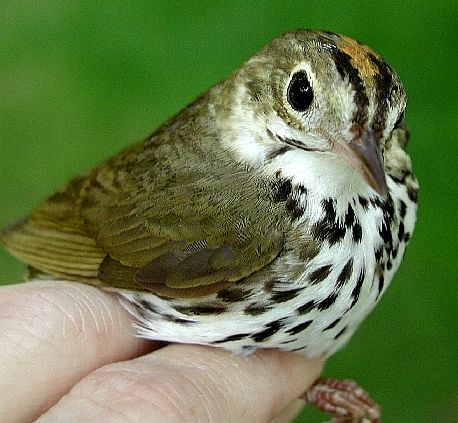

Many species at Powdermill, including most
American Redstarts,
are well along with their molt now. The photos below show two different
second year (SY) male American Redstarts
caught on 6/30 that were molting from their female-like gray and yellow
plumage to their definitive black and orange. The top bird's molt
score was 12, while the bottom bird scored a 24.
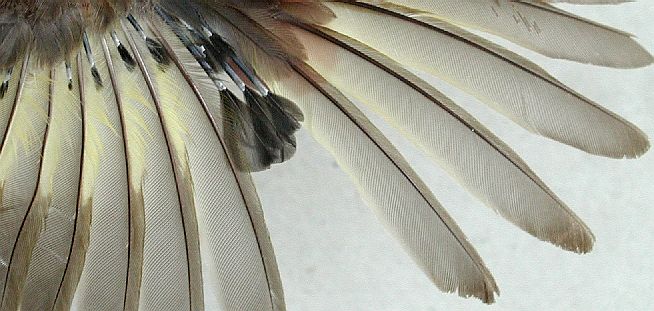
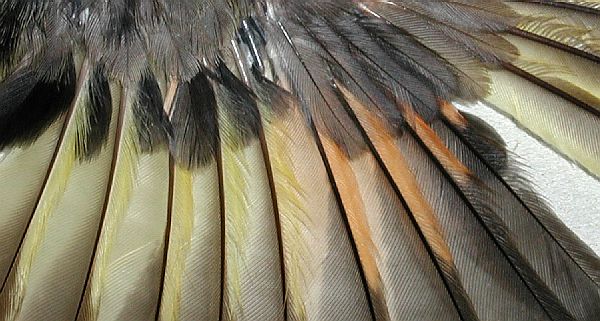
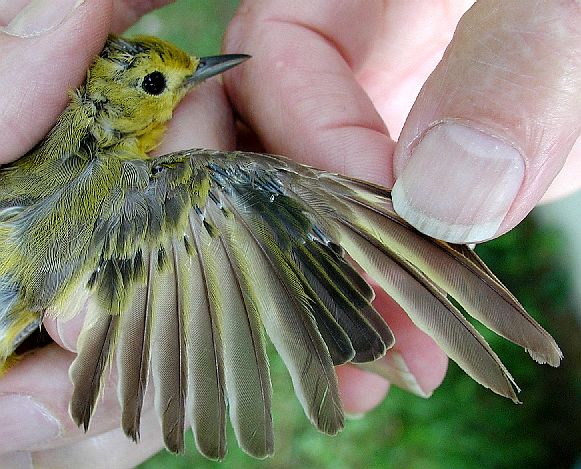
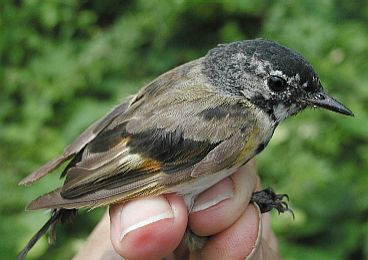
we are also catching juveniles of many local breeding species. When these are still clad mostly in their fluffy juvenal plumage, they can be puzzling as well! Thankfully, most species begin molting out of this often nondescript plumage within days after fledging. Do you know the species of warbler pictured below? (Answer at the bottom of this page)
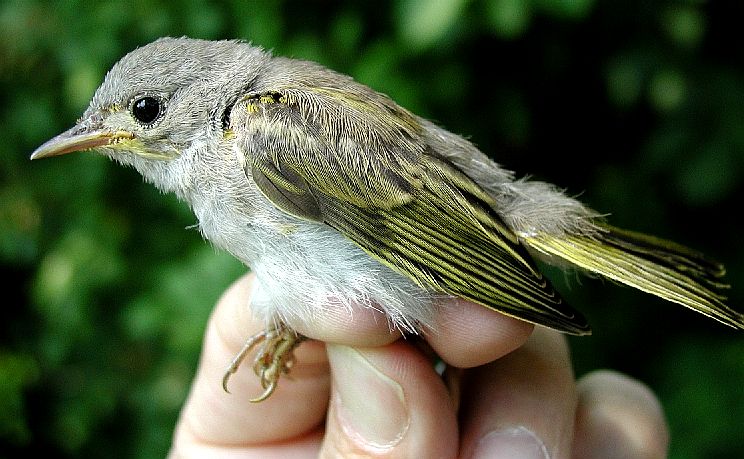
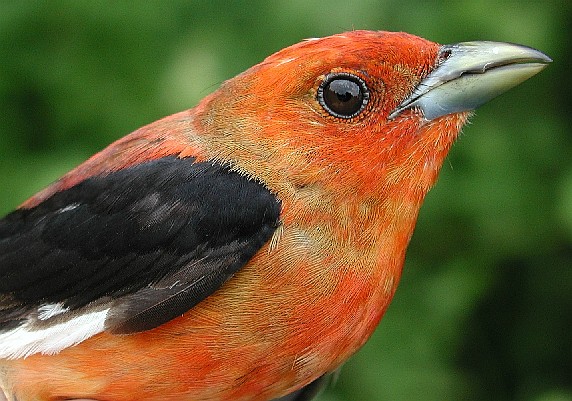
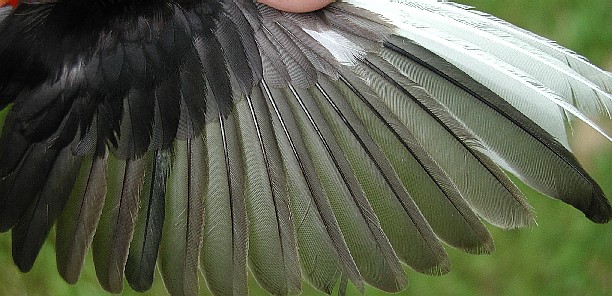
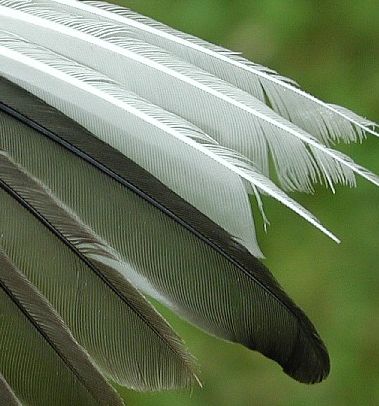
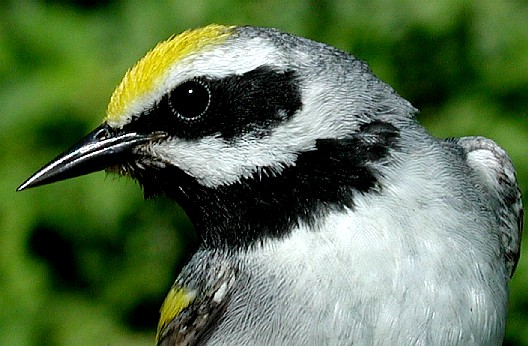
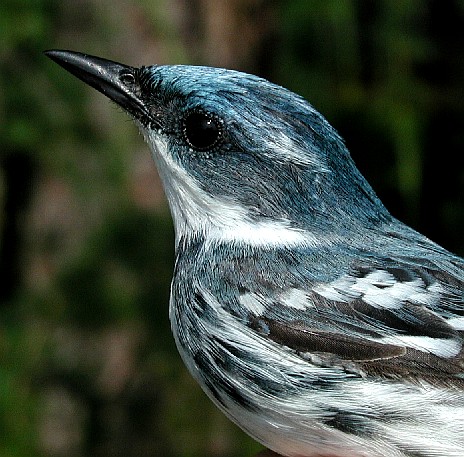
For her doctoral research under Dr. Raleigh Robertson, Kate has been mist-netting CERWs from throughout their breeding range (as far south and west as Arkansas and east and north to Pennsylvania and southern Ontario). She plans to analyze isotope ratios from samples of feathers grown on the breeding grounds (i.e., retained juvenal feathers and/or feathers replaced during the prebasic molt) and on the wintering grounds (i.e., body feathers and coverts replaced during the prealternate molt). Kate hopes that isotope information obtained from carefully selected feathers from CERWs caught at various locations throughout the species' breeding range will provide insights into possible differences among breeding populations in the location of their wintering grounds.
In the photo below of our recently banded SY male CERW, the blacker, fresher inner greater coverts (replaced on the bird's wintering grounds during its first prealternate molt) contrast with the duller three outer greater coverts and carpal covert (molted last summer during the first prebasic molt on or near the bird's natal grounds). These first basic coverts, in turn, contrast with the retained juvenal primary coverts and alula. Note, also, that there is the usual molt limit seen in many passerines between the molted (first basic) alula covert (blackish with a blue edge) and the two larger browner retained juvenal middle and distal alula feathers. In the case of this bird, the inner greater coverts, as well as any of the scattered darker median and lesser coverts, from the alternate plumage would be expected to have the isotope "signature" from its wintering grounds. The outer greater coverts, as well as any of the scattered duller median and lesser coverts, from the first basic plumage (also, any of the retained juvenal flight feathers) would provide the breeding ground isotope signature.
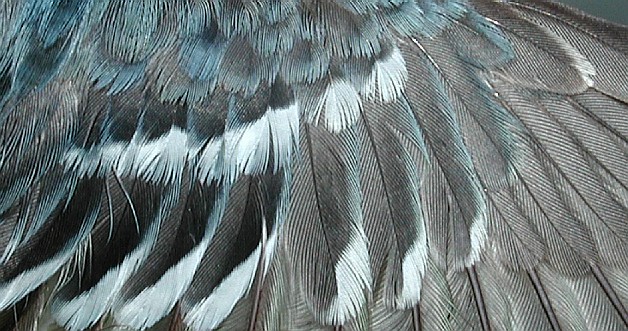
Answer: The juvenile warbler pictured above is a Yellow Warbler